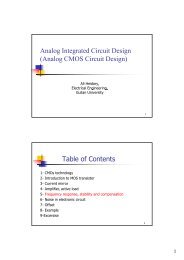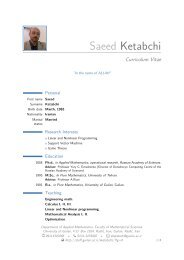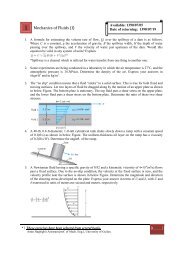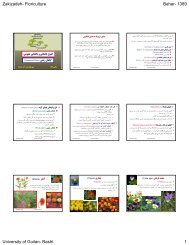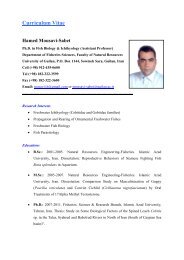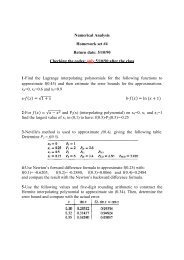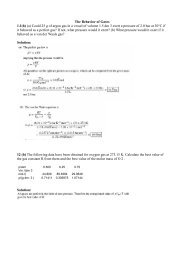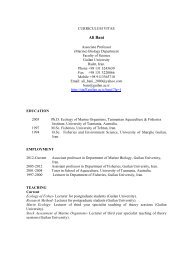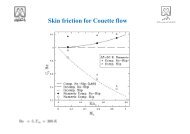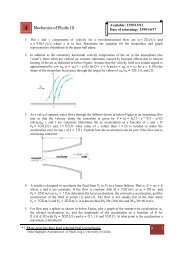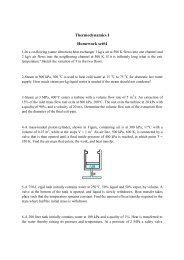Medical Tourism in Developing Countries
Medical Tourism in Developing Countries
Medical Tourism in Developing Countries
- No tags were found...
You also want an ePaper? Increase the reach of your titles
YUMPU automatically turns print PDFs into web optimized ePapers that Google loves.
Plastic Surgery is Not Peanuts ● 33<strong>in</strong>come. The higher the multiplier coefficient, the greater the amount ofadditional employment or <strong>in</strong>come created by an <strong>in</strong>crease <strong>in</strong> tourism expenditure.In typical LDCs, each dollar spent by tourists creates $2 to $3 ofoutput <strong>in</strong> the economy (so the coefficients range between 2 and 3 51 ).The UNWTO claims that the tourism multiplier has a large growthpotential for the follow<strong>in</strong>g reasons. 52 First, tourism is consumed where it isproduced, usually <strong>in</strong> conjunction with other products and services. Second,s<strong>in</strong>ce tourism is labor <strong>in</strong>tensive, a broad range of workers receive its <strong>in</strong>comeand, <strong>in</strong> turn, spend it <strong>in</strong> the local economy. Third, given tourism’s diversity,the scope for broad participation is large, lead<strong>in</strong>g to development of the<strong>in</strong>formal sector.The net effect of tourism multipliers on the macroeconomy may belower than expected due to leakages associated with the dependent natureof tourism.<strong>Medical</strong> <strong>Tourism</strong> and DependencyDependency models were popular <strong>in</strong> the development literature dur<strong>in</strong>g the1970s. 53 Although many varieties existed, the common denom<strong>in</strong>ator wasthe unequal nature of the economic relationships between MDCs andLDCs. Such theories drew on imperialist economic relations, but wereapplied to the post-colonial period, especially <strong>in</strong> countries where economic<strong>in</strong>dependence did not follow political <strong>in</strong>dependence. The key concepts weredom<strong>in</strong>ance and dependence, as the summary provided by Dudley Seersshows: foreign capital and transfer of technology play a negative role <strong>in</strong> thereceiv<strong>in</strong>g region; the <strong>in</strong>ternal policies of the receiv<strong>in</strong>g region are <strong>in</strong>consequential<strong>in</strong> comparison to the power of the <strong>in</strong>ternational forces so theremust be strong government <strong>in</strong>tervention; there are no benefits <strong>in</strong> the formof development (as measured by an improvement <strong>in</strong> the quality of life) <strong>in</strong>the less developed country; the role of <strong>in</strong>ternational capitalism is great <strong>in</strong>generat<strong>in</strong>g the expansion of <strong>in</strong>dustrial capitalist countries while underdevelop<strong>in</strong>gthe receiv<strong>in</strong>g regions; there is blocked development <strong>in</strong> the receiv<strong>in</strong>gregion. 54 In other words, dependency prevents development and <strong>in</strong>dustrializationexcept of a distorted k<strong>in</strong>d. In contrast to those that view the negativeeffects of trade among regions of differ<strong>in</strong>g levels of development as <strong>in</strong>significant,adherents of dependency theories claim that those effects are at theforefront of all <strong>in</strong>traregional and extraregional economic relations. Theyfurther claim that the less developed (usually agricultural) regions are at adisadvantage when exchang<strong>in</strong>g their product with the more developed(nonagricultural) regions. The key to this analysis is the nature of theregion’s output, namely, the region’s economic base, and the consequent





